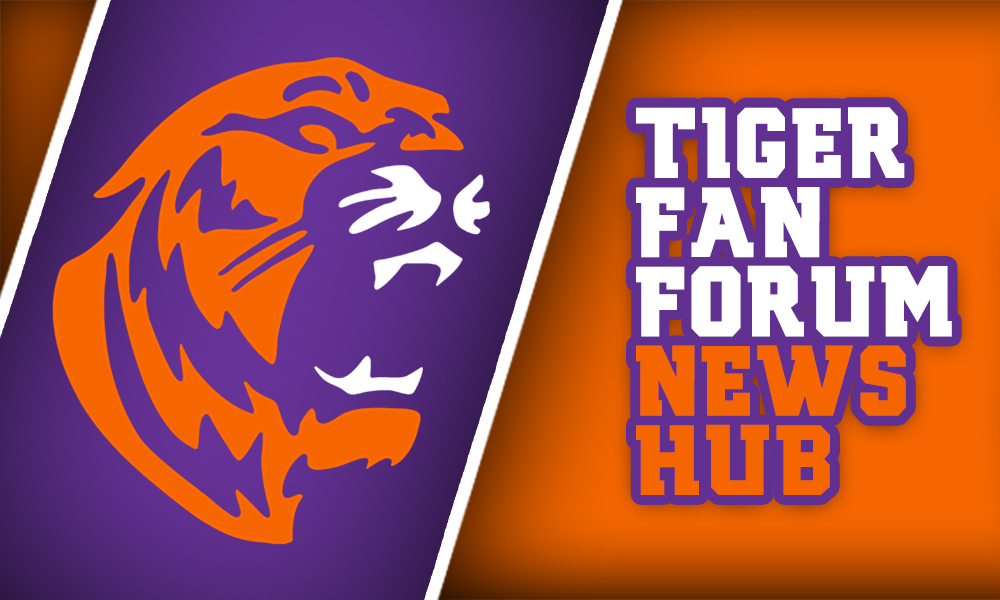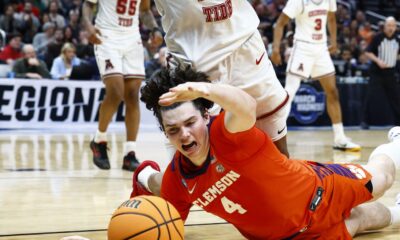
The objective of this post is to compare Clemson with the Elite Level HUNH teams of the past 5 years. I set out to look for statistical areas where we are achieving on or above the level of Elite HUNH teams and also to find areas where we need to improve.
This is the next post in the offseason series centered around Clemson and “Eliteness.” The goal is to present a perspective that will help my fellow Clemson fans grasp things that other teams’ fans do not. The latest posts in this series can be found here: Revisiting the 2014 Weighted Recruiting Composite, 2014 Elite Teams and Beyond, Elite Programs for 2015, Hurry Up Defense: 2015, The Stat of Eliteness and The Bowden/Swinney Era.
I dedicated the last post to what I referred to as “The Elite Stat” and the Offensive Line. This time, we’re going to pull back a bit and look at overall offensive and defensive production in a similar fashion. I posted this analysis a year ago but, each new-year offers up a new set of data to either reinforce or contradict previous opinion. Of course, it’s going to be unavoidable to “kick the dead horse” a bit, so my apologies ahead of time.
The objective of this post is to compare Clemson with the Elite Level HUNH teams of the past 5 years. I set out to look for statistical areas where we are achieving on or above the level of Elite HUNH teams and also to find areas where we need to improve.
The teams I use for this comparison are: Auburn 2010, Oregon 2010, Oklahoma St. 2011, Oregon 2011, Oregon 2012, Texas A&M 2012, Baylor 2013, Auburn 2013, and Oregon 2014. I’ll also be including Alabama 2014, Ohio State 2014, Florida State 2014, and Georgia Tech 2014 for comparison purposes as well.
One issue that stands out from the “Hurry Up Defense: 2015” post is that we didn’t exactly qualify as a HUNH team from a “pace of play” standpoint last year. That’s ok for two reasons:
1.The only teams listed in this comparison that are definitively on our (2011-2013) level of “plays per minute” are Oregon 2012, Baylor 2013, and Oregon 2014. I have not been able to find complete data on 2010 and 2011, however the author of the data from recent years did post that Oregon’s two slowest years, 2010 and 2014, were also their most successful.
2. Since going fast has been our identity for 3 of the 4 years under Morris and we could easily go back to that philosophy under ScElliot, I decided to keep the comparison the same. You could even argue that, with Clemson slowing it down last year, our four-year averages line up better with the rest of the teams in this comparison.
Let’s get to it. As my boy Bubba Ray Dudley would say, “Get the tables!”
At the bottom of each table will be the Averages of the Elite HUNH teams. In BOLD is every stat that is at or above those averages. So, the bold numbers are where Clemson measured up to the Elite Level HUNH philosophy teams in that particular category. The last column, “Marks Hit,” lists the total number of categories that each team hit the Elite Level.
OFFENSE
Team
PlaysPerGameRank
ScoringOff.Rank
PointsPerGame
S&POff.Rank
YardsPerRushRank
YardsPerRush
YardsPerPass AttRank
YardsPerPass Att
YardsPerPlayRank
YardsPerPlay
RedZoneTDRank
RedZoneTD%
TurnOversRank
TurnOvers
MarksHit
#1 Auburn 2010
54
7
41.2
1
2
6.12
1
10.1
3
7.37
26
66.67
16
17
8
#3 Oregon 2010
7
1
47
11
4
5.93
26
8
11
6.74
37
64.71
71
24
4
#3 Oklahoma St. 2011
16
2
48.7
2
10
5.39
10
8.5
3
7.24
37
64.63
62
23
7
#4 Oregon 2011
33
3
46.1
7
1
6.66
23
8.1
4
7.21
6
76.12
43
20
8
#2 Oregon 2012
11
2
49.6
2
1
5.97
44
7.7
10
6.60
1
80.82
39
19
8
#6 Texas A&M 2012
8
4
44.5
1
2
5.9
15
8.4
2
7.08
10
75.53
54
21
9
#13 Baylor 2013
5
1
52.4
3
13
5.37
1
10.4
3
7.48
53
64.18
13
16
10
#2 Auburn 2013
62
12
39.5
6
4
6.3
18
8.5
8
6.92
13
72.13
41
19
4
#2 Oregon 2014
34
4
45.4
3
13
5.46
1
9.9
2
7.34
41
65
1
11
8
AVERAGES
25.56
4.00
46.04
4.00
5.56
5.90
15.44
8.8
5.11
7.11
24.89
69.98
37.78
18.89
7.33
#22 Clemson 2011
14
23
33.6
24
55
4.19
46
7.5
40
5.85
83
57.14
72
24
1
#11 Clemson 2012
3
6
41.0
5
70
4.23
6
8.8
24
6.28
13
72.88
54
21
8
#8 Clemson 2013
13
8
40.2
12
73
4.19
13
8.8
23
6.38
24
68.33
89
24
4
#15 Clemson 2014
37
54
30.8
44
108
3.53
50
7.5
85
5.36
113
48.08
34
18
2
AVERAGES
16.75
22.75
36.40
21.25
76.50
4.04
28.75
8.15
43.00
5.97
58.25
61.61
62.25
21.75
3.75
#1 Ohio St. 2014
56
5
44.8
1
11
5.75
7
9.1
6
6.98
13
71.62
101
26
5
#5 Florida State 2014
87
35
33.7
11
68
4.29
22
8.2
25
6.39
73
59.32
127
32
0
#4 Alabama 2014
72
16
36.9
2
28
5.10
12
8.6
14
6.66
17
70.31
64
22
4
#8 Georgia Tech 2014
73
12
37.9
4
6
6.06
3
9.3
9
6.72
20
69.86
34
18
7
Averages
72.00
17.00
38.33
4.50
28.25
5.30
11.00
8.80
13.50
6.69
30.75
67.78
81.50
24.50
4.00
I like to get right to the big picture, so my quick observations for each year would be:
The 2011 Offense that we all did backflips over really wasn’t on the level of any of the Elite HUNH Teams and was actually a sub-par year for Clemson compared with 2012 and 2013. But hey, we were starving for offense at that time and the HUNH was a breath of fresh air. It was such a drastic change from 2010 that it was hard not to sip the Orange Kool Aid. After that stretch where we beat Auburn, FSU, and VT back to back to back, I’ll admit that I was sold.
2012 was probably the peak year from a talent standpoint with Tajh and Ellington still in the backfield and Nuk’s emergence into the stratosphere to take the #1 WR spot from Sammy. So, it’s not surprising that it remains our best overall statistical year offensively. What may surprise is that our overall offensive efficiency in “yards per play” never got close to the level of those Elite Teams. The Elite Teams average over a yard “per play” more than Clemson at our best.
With the departure of Nuk in 2013, we showed that we were still an Elite Level passing team. That’s a big credit to Morris, Martavis Bryant, Tajh Boyd, Rod McDowell, Sammy Watkins and the rest of the offense for continuing to grow and stepping up.
2014 was a particularly down year for the offense when compared with 2011-2013. You all know that we had a potential superstar at QB that could’ve changed that, but he couldn’t stay on the field.
If you look at the averages during the “The Chad Era,” we were only consistently Elite Level in going fast. We knocked on the door of certified offensive Eliteness but the door didn’t definitively open. We averaged more plays per game than the Elite Level HUNH teams but we never quite got into the Elite Level in Scoring Offense (Top 4).
The reason for that stands out like a sore thumb and is pretty easy to find since I just dedicated an entire post to the issue. Go ahead and drag in “Seabiscuit,” because it’s easy to see that it’s running the football. We don’t even come close to the Elites in ability to run the football.
Clemson’s struggles up front on offense have not been helped by our speed. And if you’re wondering, yes, speed does help the other Elite teams run the ball better. In fact, get this, the Elite HUNH teams are even better at running the football than the National Championship Teams from my last post. Get some of this, “Seattle Slew!”
The NC teams from the past 7 years averaged 5.65 yards per carry and the Elite Level HUNH teams averaged 5.90 yards per carry.
That makes sense because Elite HUNH teams are trying to gas the opposing defense to create an advantage. The Elite Level teams prove to be the most successful in creating that advantage. So, when the defense is gassed, more long runs get broken and that yields overall better rushing efficiency for Elite HUNH Teams, but not for us.
The real surprise here may be that we were just barely on the elite level passing the ball at 8.8 yards per attempt. The reason for this is not because we weren’t capable of being one of, if not, the best passing team in the nation. The reason is because a great offense can challenge all areas of the field.
In other words,” Smarty Jones” is about to take one in the grill. Had we been better at running the football, it would’ve caused more problems for the defense, and in turn, would’ve led to better passing efficiency (remember this when you’re drafting your fantasy team in a couple months). Instead, Clemson deals with more situations where we must throw the ball when the defense knows that we must throw the ball.
To look at that further, check out Georgia Tech at the bottom there. As you can see, they average a whopping 6.06 yards per carry running the option. Now look at their “yards per attempt” passing. That’s right, Georgia Tech 2014 was a more efficient passing team than Clemson 2012 with Boyd, Watkins, Hopkins, Bryant, Ford, etc.
It’s true that when GT has to throw they aren’t all that special. However, because of their running attack, they are in that situation a lot less compared to other teams. When their running game is working and the defense is loading up to stop it, their passing game is Elite-Level-effective (without elite level passing game talent I might add). Remember that the next time someone calls Paul Johnson’s offense a “gimmick.” This formula is tried and true on the college level and has never been stopped. (If you’re wondering why GT was not NC material, see “yards per play” on the defense table below).
Continuing to look at the bottom four teams, Florida State dropped from hitting 12 of these Elite Level marks on offense in 2013 to 0 in 2014. Their offense certainly wasn’t bad by any means. Actually, they were good but it’s difficult for even the best teams to replace Elite Level Talent. You can see how the losses of Kelvin Benjamin and Kenny Shaw at WR, Bryan Stork at C, and the two RBs Freeman and Wilder, hurt their effectiveness across the board.
FSU dropped in scoring offense from #2 in 2013 to #35 last year. FSU’s “yards per play” show they were still good at moving the ball, in fact, better than we ever were under Morris. However, the low Redzone TD rate and the high turnover rate negated a lot of their production. They ranked a shocking 127thout of 128 teams in turnovers per game and 73rd in Redzone TD rate.
Speaking of RedZone TD rate, look at the embarrassment that is Clemson. 113th is completely unacceptable by a program with top 15 talent, and yet, this is rarely addressed by the media covering Clemson. Having Tajh Boyd and his FB frame for QB Power runs negated a lot of the lack of push from the OL while he was here. Without Boyd, our RedZone production was worse than I could have imagined.
So, if you look back to the pivotal game of our season, @FSU, what happened in that game put our poor RedZone performance on display in epic fashion. We got into the RedZone 7 times and came away with an abysmal 17 points. To put that in perspective, FSU got in the RedZone 6 times against us in 2013 and scored 51 points.
FSU turned the ball over twice against us, which is slightly below their average, but close to what they normally do. Our “7 Deadly Mistakes” were egregiously inopportune and it seemed like beating the #1 team on the road was too big of a moment for us mentally. Hopefully, that mental block can be overcome in the way it was with South Carolina.
Offensive Summary: Who are we now? Are we still the racecar HUNH team from 2011-2013 or the slower paced team in HUNH clothing? If we’re going to take the rest time away from our own defense to create an advantage for our offense, the numbers here show that we need to perform amongst the top 4 Scoring Offenses in the nation to attain Eliteness. 7 of the 9 teams in this comparison did just that. The two that didn’t, also didn’t run their offense at HUNH speed (ie. slower speed in HUNH clothing). “Right cross, Mongo!” It is a safe assumption that Clemson will not get into the top 4 until we have better rushing efficiency brought on by a more effective OL. I believe the ceiling is real and there is no escape from developing an effective run blocking Offensive Line.
Now on to the defense:
Defense
Team
ScoringDefRank
PointsAllowd
S&PDefRank
20 ydPlays AllowdRank
# 20 ydPlaysAllowd
Give upPoints inRed Zone %
GiveUp TDinRed Zone %
YardsPerPlayAllwdRank
YardsPerPlayAllwd
3 andOutsRank
FirstDown%
TOForcedRank
TOsForced
MarksHit
#1 Auburn 2010
53
24.1
17
64
54
84.44
60
56
5.36
86
70.9
58
22
2
#3 Oregon 2010
12
18.7
3
48
49
67.5
42.5
11
4.67
23
62.3
2
37
13
#3 Oklahoma St. 2011
61
26.8
13
92
64
72.92
50
59
5.45
66
67.5
1
44
4
#4 Oregon 2011
52
24.6
12
82
60
80.77
59.62
35
5.07
34
63.4
19
29
7
#2 Oregon 2012
25
21.6
2
15
43
68.63
49.02
26
4.94
34
63.5
1
40
13
#6 Texas A&M 2012
26
21.8
9
71
58
78.57
57.14
37
5.22
52
66.7
104
16
9
#13 Baylor 2013
36
23.5
24
100
69
76.19
61.9
9
4.75
12
58.1
17
29
6
#2 Auburn 2013
47
24.7
21
117
76
73.08
50
95
5.97
83
70.3
81
19
2
#2 Oregon 2014
31
23.6
8
111
70
83
84.75
64
5.52
101
72.4
3
34
4
AVERAGES
38.11
23.27
12.11
77.78
60.33
76.12
57.21
43.56
5.22
54.56
66.12
31.78
30.00
6.67
#22 Clemson 2011
81
29.3
73
77
59
84.62
55.77
71
5.60
52
65.3
49
23
4
#11 Clemson 2012
46
24.8
34
109
69
75.00
52.27
69
5.65
50
66.2
48
23
3
#8 Clemson 2013
24
22.2
12
58
57
81.82
63.64
23
5.03
1
53.6
10
30
11
#15 Clemson 2014
3
16.7
1
8
40
74.07
55.56
1
4.03
1
48.7
34
24
11
AVERAGES
38.50
23.25
30.00
63.00
56.25
78.88
56.81
41.00
5.08
26.00
58.45
35.25
25.00
7.25
#1 Ohio St. 2014
26
22
2
10
22
84.44
68.89
25
4.98
7
58.1
5
33
11
#5 Florida State 2014
50
25.6
30
103
68
75
53.85
63
5.51
70
67.9
28
26
4
#4 Alabama 2014
6
18.4
3
50
54
84.09
38.64
18
4.87
43
63.5
65
20
10
#8 Georgia Tech 2014
53
25.7
46
100
67
79
52.83
111
6.32
97
71.9
17
29
2
Averages
36.33
23.23
26.33
84.33
63.00
79.36
48.44
64.00
5.57
70.00
67.77
36.67
25.00
5.33
The very first thing you need to notice is that there is no Elite HUNH Team with a better statistical defense than their offense. That’s by design and a philosophical choice. It’s a choice I call, “Offense First” football.
You can see that over the past four years, we average 3.75 Marks Hit on Offense and 7.25 Marks Hit on Defense. That means that we have averaged better defensive performance than most of the Elite HUNH Teams. However, from 2011-2013, the Clemson media has been touting the offense as “elite” and the defense needs to catch up.
Our only issue the past couple years is that we have run an “Offense First” philosophy where we have an incomplete offense. Wait, I think I just heard “Mr. Ed” talking trash.
While there are many ways to win a football game, the specific way we have chosen has fallen short of the Elite Level because it puts an increased reliance on an OL that can’t move people off the ball. We’ve arguably had the best skill position talent in the nation from 2011 to 2013 and we can’t get to the Elite Level.
The blueprint for Eliteness in the HUNH system has been laid out 9 times in the past 5 years and you’re looking at it. The HUNH Blueprint says that you want to field a top 38 defense and a top 4 offense in the National Rankings. If “Best is the standard,” that’s what the best HUNH teams consistently do.
Now, if “just top 38” is an uncomfortable number for you defensively, then advanced stats help clear up the picture a bit. S&P, the creation of Football Outsiders’ Bill Connelly, flushes out those extra possessions and leaves you with more of a “play-by-play,” “field position,” and “strength of schedule” based gauge of effectiveness.
When we shed all those extra possessions and get down to defensive efficiency on a play-by-play basis, you can see that all the Elite HUNH teams rank within the Top 25 defensively. You can also see that Clemson played Elite Level HUNH Defense the past two years. Of course, last year we were Elite Level for any style of play since it’s pretty hard to be ranked any higher than #1.
That brings up an interesting conundrum for Dabo on “pace of play.” Clemson has a long history of great defense. Even our sub-par teams from the 90s and 00s had very good defensive play on a yearly basis (sans the Reggie Herring years). You could argue that we consistently get the kind of players that are conducive to great defense. There is no doubt that we currently have one of the best Defensive Coaching staffs in the nation right now either.
On the other hand, we are in a rebuilding year defensively and are back to being loaded at the skill positions again on offense. So, Dabo could choose to ratchet back up the tempo and go “all in” with the offense and try to outscore our opponents. Then again, the talent level is there on defense, just not the experience. The younger guys will be in learning mode, especially early on, so Dabo may choose to protect the defense by keeping them off the field as much as possible.
Unfortunately in order to do that (cue “Sunday Silence), you have to grind clock with an efficient running game. So, will we be able to control the clock if Dabo chooses to slow it down again? Would the defense hold up even if we go slower? I’m getting a headache just thinking about it. I can’t begin to speculate what Dabo is going to do.
I’d personally like to see a situational approach to “pace of play” based on in-game scenarios and matchups. There’s no rule that says you have to go fast all the time to be successful. In fact, looking at the numbers above, you could easily argue (and I have) that we were going too fast at times in the past and let things spiral out of control. Sometimes the speed was a detriment, especially in sudden change situations (see 2nd Quarter of the West Virginia game, N.C. St 2011, GT 2011, and the late 3rd Quarter of FSU 2012).
Defensive Summary: Your offense, defense, and special teams are all married to each other. It’s pretty tough to have one area of play not affect the others. They’re all inter-dependent. Despite what the National Rankings show you, Elite Teams are complete football teams, not just great offenses or great defenses.
To illustrate that, let’s bring back our National Champions from the previous post. This table includes both offensive and defensive statistics:
National ChampionshipTeam
Year
ScoringOffense
ScoringDefense
Off + Def Average
Yards per RushRank
Yards Per Rush
S&PRushingRank
Yards per PassAttempt Rank
Yards per PassAttempt
S&PPassingRank
Yards PerRushAllowedDefenseRank
S&PRushingDefenseRank
Yards Per AttemptAllowedDefenseRank
S&PPassingDefenseRank
F/+Rank
OffenseS&P
DefenseS&P
MarksHit
#1 Florida
2008
4
4
4.0
4
5.94
1
4
9.1
3
15
15
4
4
1
1
3
14
#1 Alabama
2009
21
2
11.5
11
5.01
14
36
7.6
6
2
3
2
3
1
1
5
9
#1 Auburn
2010
7
53
30.0
3
6.12
1
1
10.1
1
9
18
57
37
1
1
17
10
#1 Alabama
2011
20
1
10.5
7
5.49
5
34
7.8
2
2
2
1
1
2
3
1
10
#1 Alabama
2012
12
1
6.5
6
5.59
4
3
9.3
6
1
1
16
4
1
4
1
12
#1 Florida St.
2013
2
1
1.5
10
5.63
13
2
10.0
1
10
4
1
4
1
1
1
14
#1 Ohio St.
2014
5
26
15.5
11
5.75
1
7
9.1
2
43
31
12
7
1
1
2
11
AVERAGES
10.1
12.6
11.4
7.4
5.65
5.6
12.4
9.0
3.0
11.7
10.6
13.3
8.6
1.1
1.7
4.3
11.4
#22 Clemson
2011
23
81
52.0
55
4.19
37
46
7.5
17
73
86
74
48
40
24
73
0
#11 Clemson
2012
6
46
26.0
70
4.23
26
6
8.8
2
66
55
68
95
27
5
34
3
#8 Clemson
2013
8
24
16.0
73
4.19
31
13
8.8
10
28
12
47
17
16
12
12
3
#15 Clemson
2014
54
3
28.5
108
3.53
106
50
7.5
50
3
2
1
1
14
44
1
6
AVERAGES
22.75
38.5
30.6
76.5
4.04
50.0
28.8
8.2
19.8
42.5
38.8
47.5
40.3
24.3
21.3
30.0
3.0
Go to the end of this and look at the Advanced Stats for Offense and Defense S&P. 13 out of a possible 14 categories are in the top 5. So the big question has an answer, “What wins Championships, Great Offense or Great Defense?” The answer is clear, “You have to have BOTH.”
There was a lot of information and some things I didn’t cover so, feel free to post questions, comments, and observations below.
Click below for the full article
Clemson vs. Elite HUNH Teams and Beyond
Source: SB Nation





Facebook
Twitter
Pinterest
Instagram
YouTube
RSS